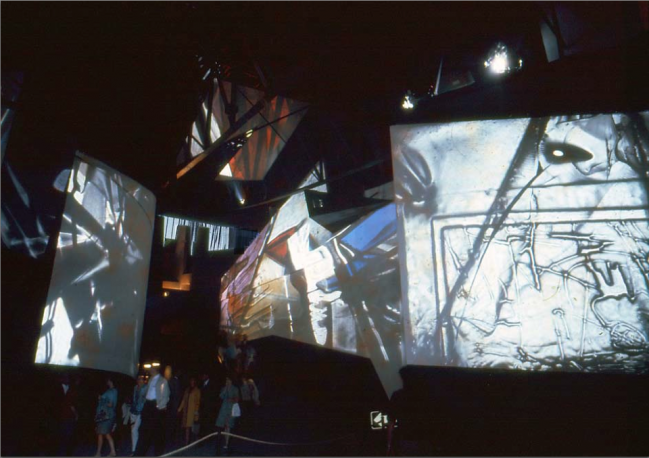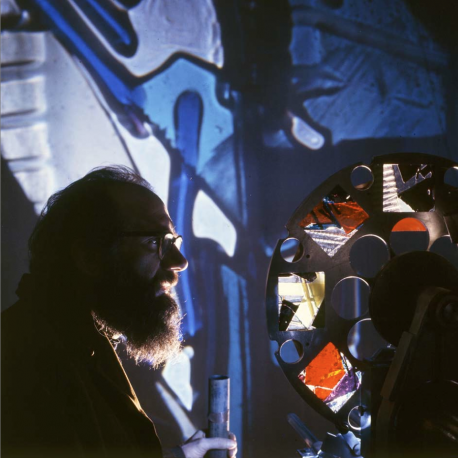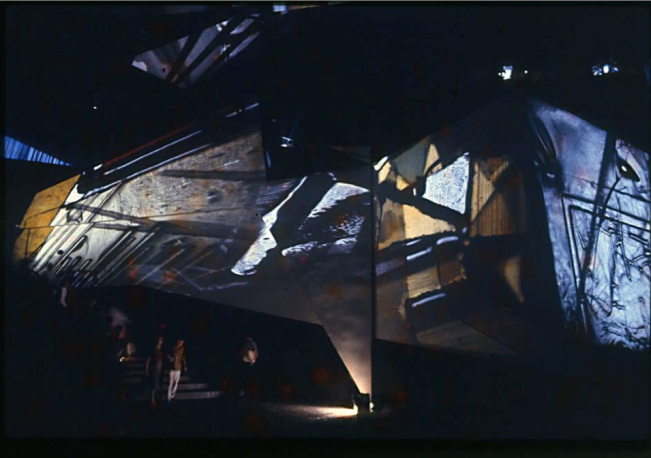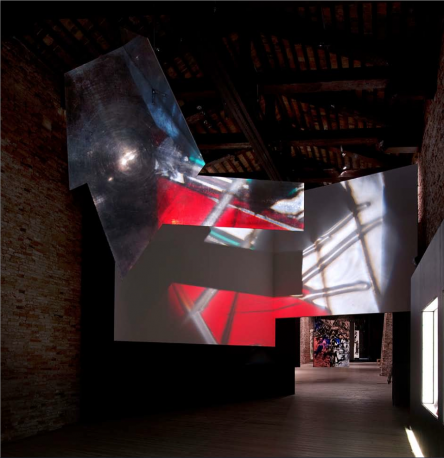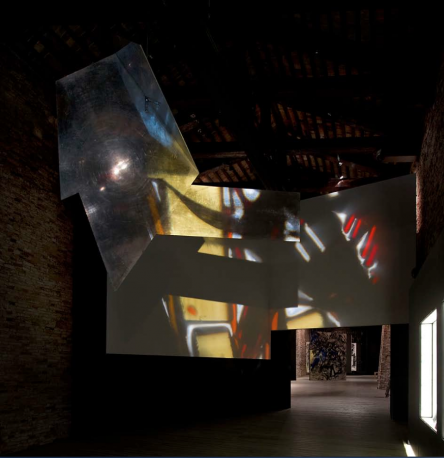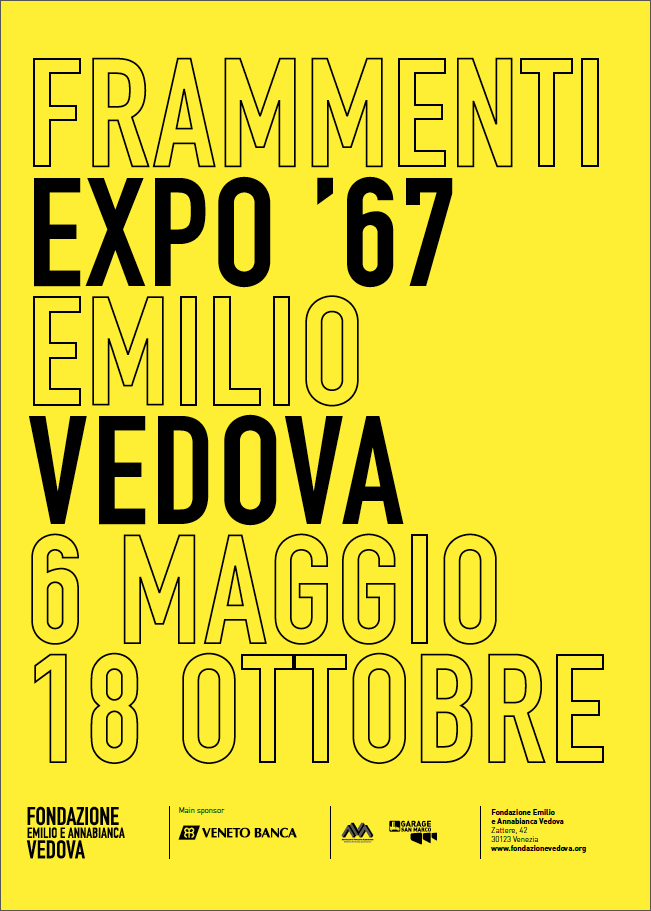
Frammenti EXPO '67. Emilio Vedova
6 May - 18 October 2015
Percorso/Plurimo/Luce
On the occasion of the Expo ’67 in Montreal, Emilio Vedova was invited by the Italian Ministry of Foreign Affairs to design the interior area linking the three sections of the Italian Pavilion – an asymmetrical space measuring 51x24m with varying heights between 8 and 16m. The artist responded creating the Percorso/Plurimo/Luce, a sail-like structure on 14 projectors, made especially by Siemens/Bauer and programmed electronically to project in sequence 112 glass plates in asynchronous movements, presented alongside electronic music created by Marino Zuccheri of the Studio Fonologia RAI in Milan. The installation was the result of a collaboration between the Italian university and industry research sectors. It was a synthesis of the artist’s experimentation at the Fornace Venini in Murano – where, together with the master glassmakers, he patented a method for working the plates – and his studio in the former Abbey of San Gregorio in Venice, loaned to the artist by the city as the ideal space to simulate the enormous spaces of the Italian Pavilion in Montreal.
The exhibition
Curated by Germano Celant with Fabrizio Gazzarri in the Magazzino del Sale, Frammenti Expo ’67: Emilio Vedova offers the public a reinterpretation of the artist’s original projection for the Expo. For the reconstruction, the original “rotating form” is used. This was made ad hoc of rough steel and mounted at the centre of the space, between the screens and projectors of the Percorso/Plurimo/Luce, creating an element that was reflected and at the same time reflected onto the screens and public. Visitors would walk inside the installation and between the projections, becoming a part of Emilio Vedova’s work. The exhibition includes comprehensive documentation with plans, drawings and period photographs.
In the Magazzino del Sale, beyond the Percorso/Plurimo/Luce, the machine designed by Renzo Piano will also be reactivated, enabling some paintings from the De America cycle, realised by Vedova in 1976, to be presented by the moving shuttles, for the first time in Venice, shown alongside some works from the eighties. The paintings, all in black and white and of an extraordinary pictorial rigour and visual impact, hark back to the artist’s experiences in the United States, maturated on several occasions from the fifties onwards. In this way, two different aspects of Emilio Vedova’s research will be presented: his work on space and light for the Expo project and his investigation into matter and pictorial gesture.
